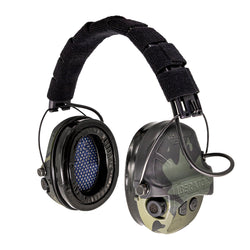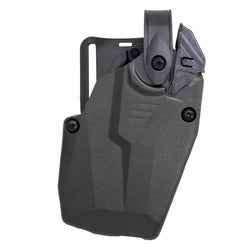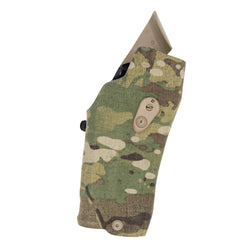The meek little .32 ACP, aka the 7.65 Browning, is a very underrated cartridge. The American preference for larger calibers often overlooks what actually makes sense for self-defense, which is why we even have .45 ACP pocket pistols. This mindset—shaped by decades of misinformation about stopping power and bullet size—has kept the .32 ACP in the dustbin of cartridge history.
However, things are changing, and .32 caliber firearms are slowly making a comeback, with new .32 guns hitting the market for the first time in years!

Beretta introduced the .32 ACP variant of the 80X Cheetah this year; last year, they delivered the Beretta 30X. Walther recently released the PPK and the PP in 7.65 Browning. It’s not a big comeback, but it’s a start.
I believe the .32 ACP has a few advantages and shouldn’t be regulated to the shadows of cartridge history. However, it’s not as plug-and-play as modern calibers. That’s the biggest downside to this cartridge.

Let’s talk about why and when you should carry the .32 ACP, and how to do it.
Should You Carry the .32 ACP?
The 7.65 isn’t a big or particularly fast round, and at first glance, it may not seem very impressive.
Handguns, in general, aren’t the best choice for self-defense—they’re simply not as effective as rifles or shotguns. Handgun cartridges lack the secondary wounding effects of rifle rounds and the multiple projectiles of a shotgun. They wound by direct contact with whatever they hit. This means means shot placement and penetration are far more important than bullet size when it comes to handgun cartridges.

A bigger bullet generally does more damage and tends to penetrate deeper. That’s why we don’t use .22LR as a duty pistol round. The accepted penetration standard is 12 inches through properly calibrated 10% ballistic gelatin.
The .32 ACP can achieve 12 to 17 inches of penetration in ballistic gel, depending on the barrel length and projectile type. While it may be more challenging for the .32 to reach these depths, it is certainly capable of stopping a threat.
Why Choose the .32 ACP?
The .32 ACP can meet the necessary penetration depth to stop a threat, but just meeting the minimum standards isn’t the best reason to choose a cartridge. One of the key advantages of the .32 ACP is its minimal recoil, making it a more comfortable option for shooters, especially in small, concealable platforms. The .32 ACP offers very little recoil, with half the recoil energy of the .380 ACP.
The .380 ACP has become the defacto pocket gun cartridge, used in guns like the Ruger LCP, but I think that’s a mistake. It’s twice the recoil, which results in a painful amount of recoil. The increased recoil, which is twice that of the .32 ACP, can make it painful to shoot, especially in pocket pistols. The .380 ACP performs best in compact-sized firearms, not in ultra-compact, pocket-sized ones.

The shorter barrel of the pocket pistol doesn’t give the .380 ACP the best ballistics. It reaches the right depths without a problem, but the increased recoil makes it difficult to land multiple hits on target. The lighter recoiling .32 ACP, on the other hand, is much more pleasant to shoot in pocket-sized pistols.
The .32 ACP offers the smallest centerfire cartridge that reliably reaches the necessary depths to stop a threat. That’s where it succeeds. It’s more reliable than the .22LR and .22 Magnum due to its centerfire design, while still maintaining low recoil.
Where it Fits
The .32 ACP excels in one area and does pretty well in another. Its main strength is in pocket pistols, like the KelTec P32, which offers an extremely lightweight and thin pistol with controllable recoil.
I’ve shot the KelTec P32 and P3AT side by side. While both guns are nearly identical except for caliber, the P32 provides one extra round and a much more controllable experience. I can empty the magazine into a target with all rounds in the chest at five yards, 1.5 seconds faster than with the P3AT, and with greater overall accuracy.
The .32 ACP excels in super small and lightweight guns. In larger guns, calibers like .380 ACP and 9mm make more sense.

The second scenario where the .32 ACP makes sense is for those who are extremely recoil-sensitive. By chambering a mid-size gun, like the Beretta 81 or the new 80X in .32 ACP, you get incredibly light recoil in a midsize package.
This is a very niche market. Most midsize guns chambered in .380 ACP are already easy to shoot, and while the .32 ACP reduces recoil even further, I doubt there are many people who need that much recoil reduction.

Choosing the Proper Defensive .32 ACP Round
The tricky part with using the .32 ACP for self-defense lies in choosing the right ammo. Conventional wisdom says you should pick a jacketed hollow point (JHP), as it offers expansion to create a larger wound channel and helps prevent over-penetration.
However, this conventional wisdom doesn’t hold true for pocket pistols. The short barrel reduces the velocity of the round, leading to less penetration from JHPs. Most expand too early and fail to reach the 12 inches of penetration required in ballistic gel after expanding.

For pocket pistols, like the 30X and P32, you want an FMJ round. Specifically, you want a 73-grain FMJ. The Fiocchi line is the hottest .32 ACP load and is what I’d recommend for adequate penetration.
If you step up to the larger Beretta 81 or the new 80X Cheetah, you can use hollow points to achieve both penetration and expansion. With their near 4-inch barrels, these pistols push the .32 ACP to its peak velocity, allowing it to perform much better.

The main problem with .32 ACP hollow points comes down to something called rimlock.
What is Rimlock?
The .32 ACP is a semi-rimmed cartridge, unlike most automatic cartridges that lack a rim. In a magazine, the rim of one cartridge sits in the recess of the cartridge below it.
The problem arises when the position is reversed, causing the rim of the top cartridge to move behind the rim of the bottom one. This can cause the cartridge to become stuck and prevent it from loading into the weapon, particularly with hollow points due to their overall length.

Hollow points often have a shorter overall length than FMJs due to the hollowed-out design, which allows the cartridges to move within the magazine. However, this movement can cause rimlock.
When shopping for 7.65 JHPs, it’s best to figure out their overall length and keep it as close to .984 of an inch as possible. Many modern cartridge makers have gotten wise to this problem and produced their JHPs with a proper length to avoid rimlock.
Small But Capable
The little .32 shouldn’t be underestimated. It’s a small but capable cartridge that excels in the pocket pistol niche. Had pocket pistol manufacturers chosen the .32 over the .380, those guns would have been a lot less likely to fade from relevance. If you want a 6.6-ounce pistol, the .32 is the best route to take.









